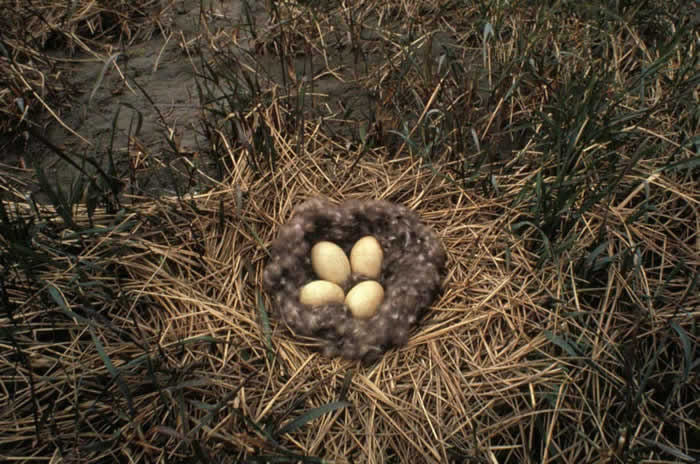
Home | About Us | Projects | Maps | Facts

Home | About Us | Projects | Maps | Facts
|
Brant Goose (Branta bernicla)
Description: The Brant is a relatively small goose, with dark brown upperparts and brown-barred, pale gray underparts. They have a black head, a short black neck, and stubby bill. The neck has a partial white ring. The under-tail is pure white, and the tail black and very short (the shortest of any goose). They are about 60 cm long - about the size of a Mallard. The western race, formerly known as the Black Brant, is darker overall. This dark little goose is often mistaken for a duck by those unfamiliar with waterfowl. 
Calls: The call of this bird a quavering crrrr-oonkkk or a soft, rolling "cr-r-r-rk." Listen to calls of this species » Range / Habitat: This species breeds in coastal Alaska and the Canadian Arctic and winters along the Pacific coasts south to California and the Carolinas. Pacific subspecies spends winters along the west coast from British Columbia to Baja California. Preferred habitats include tundra and coastal islands in the Arctic during breeding, and salt marshes and estuaries during winter. Diet: These birds live mainly along seacoasts, grazing primarily on eelgrass and other marine plants so they rarely stray from salt water. In the 1930s a disease devastated eelgrass and the brant population dropped. The brants that survived adapted to an alternative diet such as sea lettuce, sea cabbage, saltmarsh grass and lawn grass. Eelgrass recovered and today the brant population has risen. 
Nesting: The female lays 3-5 eggs in a nest made of down, moss, lichen, and seaweed located in a depression in the ground (see photo). When the female leaves the nest to forage for food, she covers the eggs with down to keep them warm. The eggs take a little less than a month to hatch. The chicks will leave the nest and are led to forage for food within a few days. The chicks fledge (leave the nest) in 40-50 days, but they stay with their parents throughout the winter. Brant pairs usually remain together and return to the same breeding ground year-after-year. Migration: Brants are long distance migrators. Some birds fly 3,000 miles from their nesting grounds on the coast of Arctic Ocean to the warm coast of Baja, Mexico. Other groups migrate from the Arctic down the Hudson Bay to the Atlantic Coast. Brants don't migrate in V's like Canada geese or straight lines like snow geese. They fly in unorganized groups.
Did you know?
Animal silhouettes available to purchase »
Photos: Natures Pics and U.S. Fish and Wildlife Service (nest) Photos: Brant photo gallery Videos: Brant videos More Information: Black Brant Geese - Washington Brant Foundation |